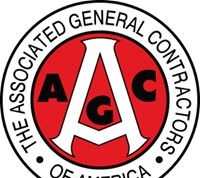Interactive Heat Map and Graphs Make Local Mortgage Information More Accessible to the Public
WASHINGTON, D.C. – September 18, 2013 – (RealEstateRama) — Today, the Consumer Financial Protection Bureau (CFPB) launched an online tool to provide consumers with easy access to public mortgage information collected under the Home Mortgage Disclosure Act (HMDA). The tool enables greater transparency by helping inform people of trends in their local mortgage markets.
“Just as the real estate motto ‘location, location, location’ was true before the recent financial crisis, it was true for the crisis. Every community was affected differently,” said CFPB Director Richard Cordray. “Our tool puts valuable information into the hands of the public in an accessible way, so they can understand what is happening in their local mortgage markets. A more transparent mortgage market will lead to a better marketplace and better outcomes for consumers.”
The CFPB’s online HMDA tool is available at: www.consumerfinance.gov/hmda
In 1975, Congress passed the Home Mortgage Disclosure Act requiring most mortgage lenders to make loan information available to the public. In 2012, there were approximately 18.7 million HMDA records from 7,400 financial institutions. This information includes the majority of the country’s mortgage applications and mortgages made – known as loan “originations” – by banks, savings associations, credit unions, and mortgage companies. The public information is important because it helps show whether lenders are serving the housing needs of their communities; it gives public officials information that helps them make decisions and policies; and it sheds light on lending patterns that could be discriminatory.
The Dodd-Frank Wall Street Reform and Consumer Protection Act transferred HMDA rulemaking authority from the Federal Reserve Board to the CFPB on July 21, 2011. While the CFPB has the rulemaking authority, other federal banking regulators and the Department of Housing and Urban Development still share other authorities. Each year, the Federal Financial Institutions Examination Council (FFIEC), comprised of the federal banking regulators, releases the full public HMDA data set to the public.
The CFPB tool being released today focuses on the number of mortgage applications and originations, in addition to loan purposes and loan types for 2010 through 2012. It looks specifically at first-lien, owner-occupied, one- to four- family and manufactured homes. Using the tool, the public can see nationwide summaries or they can choose interactive features that allow them to isolate the information for metropolitan areas. The public can easily explore millions of data points with these user-friendly graphs and charts.
Trends and highlights from the information shown by the tool include:
- Heat map shows that mortgage applications and originations were up:One way to measure the strength of a local mortgage market is to look at the number of mortgage applications and originations. The CFPB tool contains a nationwide heat map showing that applications and loan originations increased in most local mortgage markets in 2012. This tool allows users to drill down to see this information by metropolitan area. The data shows:
- Nationwide, loans for home purchases increased by 13 percent from 2011 to 2012.
- In most counties across the country, mortgage applications were down from 2010 to 2011, but they rebounded in 2012.
- Of the nearly 13 million applications in 2012 for home purchase loans, home improvement loans, and refinancing, more than 8 million resulted in loan originations.
- The number of loan originations increased by about 2.4 million, or 39 percent, from 2011 to 2012.
- Interactive graph shows that mortgage volume increased, driven by refinancing: A significant driver of the increased mortgage numbers in 2012 was a rise in the number of refinancings. An interactive graph in the CFPB tool, which breaks down the number of loans by purpose and by metropolitan area, shows:
- The number of refinancing applications increased from 6.6 million in 2011 to 9.3 million in 2012.
- The number of refinance loan originations increased from 3.8 million in 2011 to 5.9 million in 2012, representing a 54 percent increase.
- Refinance origination activity continues to vary by location. For example, Cincinnati, Ohio experienced a 47 percent increase while Las Vegas, Nev. saw an increase of 205 percent.
- Interactive graph on loan type shows the prevalence of FHA and VA lending: Since the housing crash, homebuyers have been heavily reliant on mortgages insured by the Federal Housing Administration (FHA) or guaranteed by the Department of Veterans Affairs (VA). An interactive graph in the CFPB tool, which breaks down the number of loans by type and by metropolitan area, shows:
- In 2012, FHA- and VA-backed loans accounted for about 15 percent and 7 percent, respectively, of home purchase, refinance, and home improvement loans combined. In 2011, these figures were 18 percent and 6 percent, respectively.
- Areas with large numbers of military families often have a higher share of VA lending, as seen in metropolitan areas such as Gulfport, Miss., where 21 percent of loans were VA, and Fairbanks, Alaska, where 29 percent of loans were VA.
The CFPB is committed to further enhancing the functionality of its online HMDA tool and plans to release additional features over time.
The FFIEC also published the full set of 2012 HMDA data today. For more information, go to: http://www.ffiec.gov/hmda.
###
The Consumer Financial Protection Bureau is a 21st century agency that helps consumer finance markets work by making rules more effective, by consistently and fairly enforcing those rules, and by empowering consumers to take more control over their economic lives. For more information, visit consumerfinance.gov.













